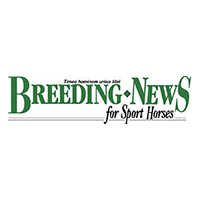A WBN report extracted from a news story originally published by the FEI
While African Horse Sickness may not be a reproductive disease and, therefore, not one that is of interest to the majority of breeders, it has certainly had a huge impact on the movement of horses around the world. Specifically, for South African breeders, their marketplace has been severely restricted by the containment measures that were necessarily created by Departments of Agriculture in so many countries around the world.
The publication of this report must, therefore, open a door that has remained closed for so long, and offer South African breeders the opportunity to finally become a contiguous member of the global breeding community.
Europe has not remained totally free of the disease as there have been sporadic outbreaks with quarantine procedures immediately imposed on areas in Spain, related to horses arrived from North Africa. Certainly, the EU has had a Council Directive (1992) that lays down the control rules and measures to combat African horse sickness. However, despite health checks performed at the borders of the EU, recurrences of the disease are possible due to the incessant movements of horses for sport, competitions or trade, and transmission by vectors (midges, mosquitoes, biting flies...), since they can move long distances and have increased their range due to global warming.
Since 2010, countries that have reported the disease to the World Organization for Animal Health (OIE) were: Botswana, Eritrea, Ghana, Lesotho, Namibia, Somalia, Swaziland, South Africa, and Ethiopia (where it’s considered endemic).
In the distribution area of vectors, but outside the endemic area, serotype 9 affected many Middle Eastern countries from 1959 to 1961. In 1965 the same serotype appeared in Morocco, and crossed the Strait of Gibralter, arriving in Spain in October 1966. Spain achieved viral eradication following an intense vaccination campaign. Until 1987, no further outbreaks were declared until an AHS outbreak of serotype 4 was caused by the importation of sub-clinically infected zebras to a safari park in Madrid. Secondary outbreaks were declared in the south of the country, which were not eradicated until 1999, by which time it had spread to Portugal.
When an outbreak emerges, early suspicions are based on clinical signs and the prevalence of vectors in the area. However, laboratory diagnosis is essential to establish a correct and confirmatory diagnosis through identification of the agent, and serological tests.
The text that follows has been extracted from the information published on the FEI website, and includes a link to the report on AHS published by the OIE that comprehensively explains the disease’s aetiology, epidemiology, diagnosis, prevention, and control...
To read the complete article you need to be a subscriberCLICK HERE TO SUBSCRIBE TO BREEDING NEWS
SUBSCRIBERS CAN READ THE COMPLETE ARTICLE BY LOGGING IN AND RETURNING TO THIS PAGE




